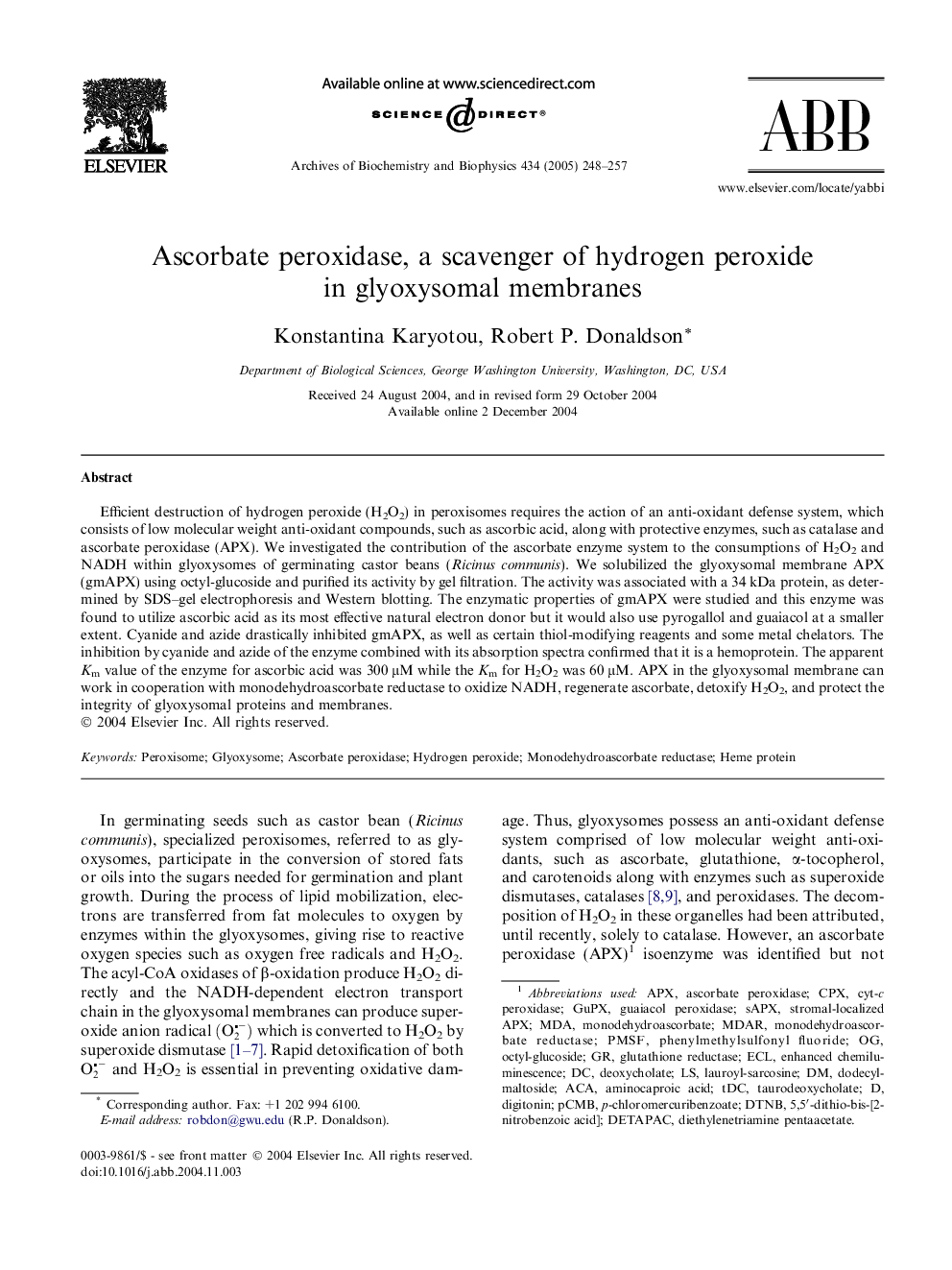| Article ID | Journal | Published Year | Pages | File Type |
|---|---|---|---|---|
| 9882330 | Archives of Biochemistry and Biophysics | 2005 | 10 Pages |
Abstract
Efficient destruction of hydrogen peroxide (H2O2) in peroxisomes requires the action of an anti-oxidant defense system, which consists of low molecular weight anti-oxidant compounds, such as ascorbic acid, along with protective enzymes, such as catalase and ascorbate peroxidase (APX). We investigated the contribution of the ascorbate enzyme system to the consumptions of H2O2 and NADH within glyoxysomes of germinating castor beans (Ricinus communis). We solubilized the glyoxysomal membrane APX (gmAPX) using octyl-glucoside and purified its activity by gel filtration. The activity was associated with a 34 kDa protein, as determined by SDS-gel electrophoresis and Western blotting. The enzymatic properties of gmAPX were studied and this enzyme was found to utilize ascorbic acid as its most effective natural electron donor but it would also use pyrogallol and guaiacol at a smaller extent. Cyanide and azide drastically inhibited gmAPX, as well as certain thiol-modifying reagents and some metal chelators. The inhibition by cyanide and azide of the enzyme combined with its absorption spectra confirmed that it is a hemoprotein. The apparent Km value of the enzyme for ascorbic acid was 300 μM while the Km for H2O2 was 60 μM. APX in the glyoxysomal membrane can work in cooperation with monodehydroascorbate reductase to oxidize NADH, regenerate ascorbate, detoxify H2O2, and protect the integrity of glyoxysomal proteins and membranes.
Keywords
Related Topics
Life Sciences
Biochemistry, Genetics and Molecular Biology
Biochemistry
Authors
Konstantina Karyotou, Robert P. Donaldson,
